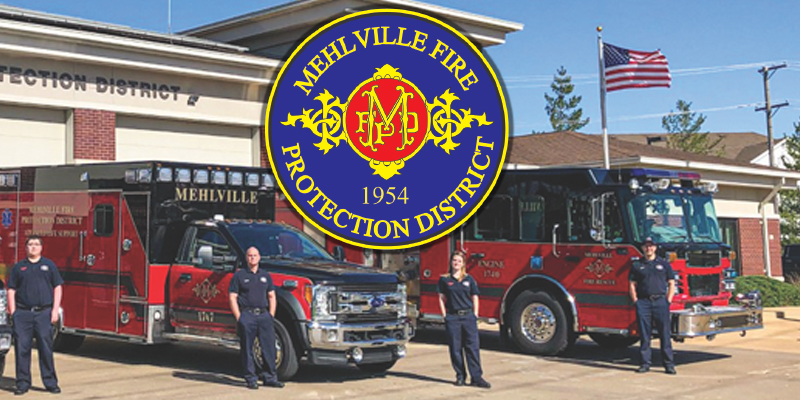The Mehlville Fire Protection District is introducing a new program to provide onsite blood transfusions in emergencies.
Currently, the district can only replace volume lost during emergencies using a saline solution. The new program will replace the actual blood lost to residents in the district who are hemorrhaging.
The program came to be after some district staff analyzed different calls “where people bleed,” such as vehicle accidents, gunshot wounds and stabbings, gastrointestinal bleeding and obstetrics emergencies, Battalion Chief Adam Hager told the MFPD Board of Directors at its Nov. 29 meeting.
The blood is stored in a special refrigerator and monitored via Bluetooth at all times to make sure it is kept at a consistent temperature between 2 degrees and 6 degrees Celsius. The refrigerator is carried in the battalion chief’s car and powered by a 12-volt outlet. Blood suppliers can also connect to the fridge as a way to keep track of the chain of custody of the blood.
“The actual refrigerator that we’re using was developed by United States special forces command because they needed their medics, their green berets, so on and so forth, to be able to deliver blood three days out, hundreds of miles from a hospital and they needed to be able to store it and keep it safe,” Hager said.
When delivered to a call, the blood will be warmed to the physiological temperature, “just as it would in a Level 1 trauma center in a manner that’s safe for patients and will contribute to the best possible outcome,” Hager said. The blood is warmed using a tool called a “QinFlow” warmer and takes two minutes to warm.
All the blood is O-positive, meaning it can be transfused universally to all patients without cross-matching it.
“It truly is the replication of what would happen in a Level 1 trauma bay,” Hager said.
Hager said a process is being developed with local medical systems to ensure that all the typical follow-up testing that would occur during a blood transfusion in a hospital will also take place for MFPD’s on-site transfusions.
The district is also working with a regional blood supplier who will not only supply the blood to the district but also rotate the blood back to the supplier before it expires so any blood not used isn’t wasted. Additionally, the district is also working to become “by way of our employees and residents of the district, should they choose to, to be able to be able to be a donor source for them.”
“So the blood that is donated by our employees and by our residents of the districts who choose to come to us, in a roundabout way, that blood actually is going to be used on their neighbors,” Hager said.
According to Hager, while similar programs are being done nationally, Mehlville Fire is one of the first in the area.
“(The blood program) once again showcases the great work that our staff and that everybody continues to do,” Fire Chief Brian Hendricks said. “This program as always, with everything we do, is going to change the lives of people and continue to showcase the terrific work that our critical care paramedics, our RNs, our fire medics do. And this is just another tool for us to use in the pre-hospital environment.”



